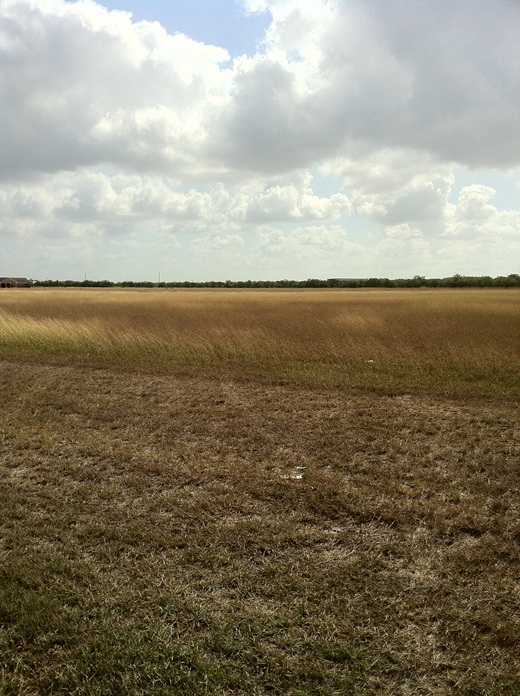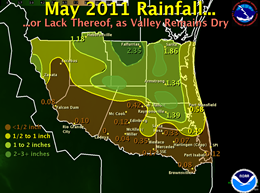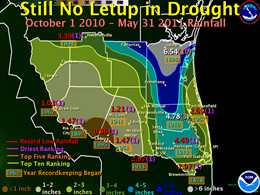 "Brown"[sic]ville, May 31st, 2011 |
|||||||||||||||||||||
| Hottest and Driest Spring in the Lower Valley? For some, March through May 2011 Broke Temperature, Rainfall Records |
|||||||||||||||||||||
|
Overview: Drought surges in spring Rainfall was paltry once again, though some areas were impacted by a "severe weather season" around mid month. Aside from an early month refreshing front and the mid month unsettled conditions, the withering heat and wind during the balance of May maintained and intensified the extreme to exceptional drought. Pool levels at the Falcon International Reservoir fell steadily as water use increased for livestock and dryland irrigation. Unfortunately, the persistent wind, low humidity, and searing sunshine devastated some of the early sorghum crop while crop for livestock foraging was largely shut down. Critical to extreme fire danger persisted across many areas, particularly west of highway 281, where daily temperature above 100°F, humidity below 30 percent, and winds between 20 and 30 mph kept land managers on edge. Temperature averages in May were among the ten highest on record in many areas, with the dearth of precipitation, particularly across the Rio Grande Valley, ranking among the five to ten driest. Mid Month Hailstorms The heat and humidity trickled in behind the warm front, and by the 18th, brutal temperatures returned. On the 20th, a spike of oppressive heat and humidity was forced by a developing dry line in the upper valley; some of the hottest apparent, or "feels like" temperatures since 2009 were realized in the Lower Valley. Temperatures soared to or just above 100°F with heat index values pushing 115°F, accompanied by blast furnace winds above 40 mph. The dry to moist contrast fueled the development of isolated strong to severe thunderstorms across ranchland of the four corners (where Starr, Hidalgo, Jim Hogg, and Brooks counties meet) which dumped hail the size of quarters (at least), torrential rains, and frequent to excessive cloud to ground lightning. The dryline–induced rains of May 20th would be the last seen through month’s end. Just How Hot was spring? The following table shows preliminary rankings for temperature (monthly and seasonally) and precipitation (seasonally) for the three largest population centers in the Lower and Mid Valley. Records for Brownsville date back to 1878; Harlingen, 1911, and McAllen/Miller, 1961. For daily and monthly details, go to our local climate page.
|
|||||||||||||||||||||
 Preliminary measured (numerical values) and estimated (contours) rainfall for May, 2011. |
 Preliminary measured (numerical values) and estimated (contours) rainfall for the water year beginning October 1, 2010 and continuing through May 31, 2011. |
||||||||||||||||||||